Margaret Murray: Mathematician and Mountaineer
Margaret Murray was the University of St Andrews’ first female graduate in mathematics and natural philosophy. She was also a talented teacher and an intrepid mountaineer. Her achievements were an inspiration to hundreds of young girls and show her for the exceptional individual that she was.
Early Life
Margaret Murray was born on 17 October 1874, in St Andrews. Her parents were George Murray, the town’s postmaster and future provost, and Margaret Murray, née Younger. She had an older brother, John, an older sister, Agnes, and a younger sister, Jane. She attended Madras College in the town before being admitted to the university in 1893 with the help of two academic scholarships. One of these scholarships was the Taylour Thomson Bursary, founded in 1883 by former British diplomat Sir William Taylour Thomson when he bequeathed the university £30,000, equivalent to approximately £2.9m in April 2023. The other scholarship was a Berry Scholarship, founded after David, the brother of controversial landowner and Australian parliamentarian Alexander Berry, bequeathed the university £100,000 on Alexander’s wishes after his death in 1873.
Margaret studied at St Andrews for five years. She took classes in English Literature, Latin, Logic, Mathematics and Natural Philosophy; she studied the latter two subjects at honours level. In her first, second and third years, Margaret won the Carstairs Prize in mathematics for academic excellence. This award was established by St Andrews graduate and surgeon John Carstairs, who was also a cousin of Sir John Leslie, the Scottish mathematician and physicist who first created artificial ice in 1810. Margaret graduated from the university in 1898 with a First Class Honours Degree in Mathematics and Natural Philosophy, the first female student to do so.
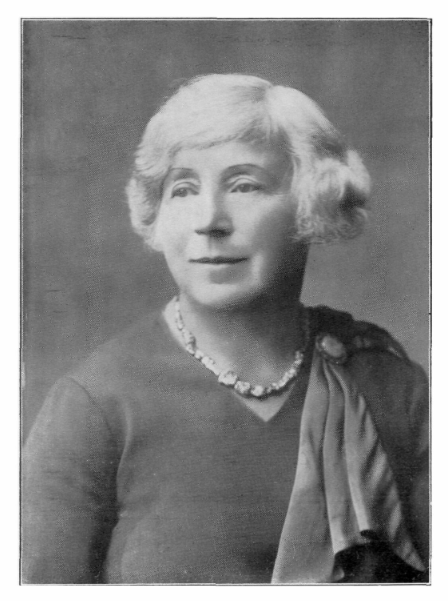
Image courtesy of Hutchesons’ Grammar School.
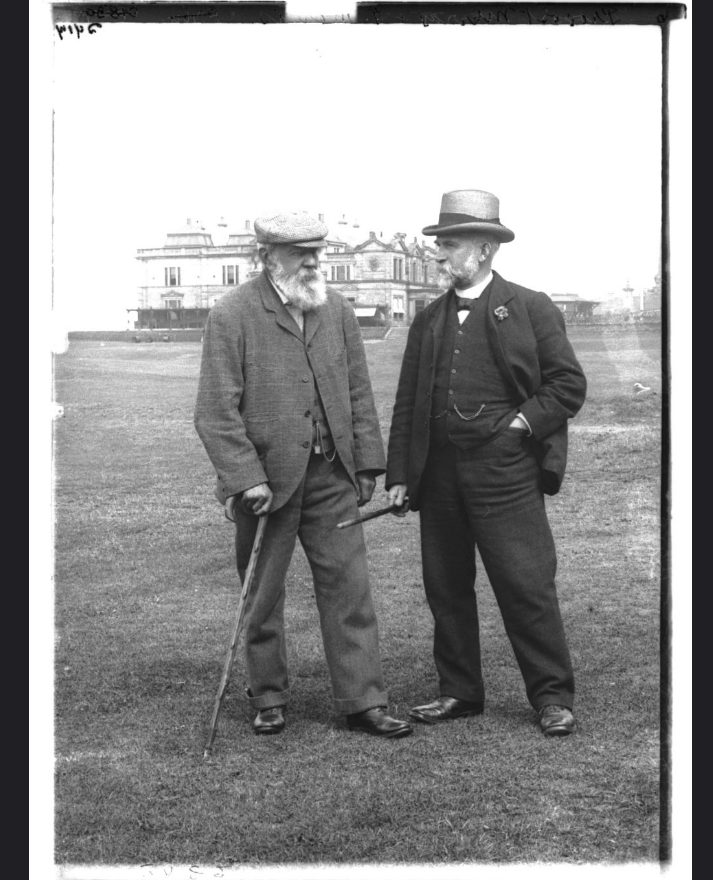
Image courtesy of the University of St Andrews Libraries and Museums, ID: GMC-F-199.
Teaching in England
After her graduation, Margaret moved to Southwold, Suffolk, where in 1899, she took up a teaching post at Saint Felix School. The school had been founded only two years earlier by Margaret Isabella Gardiner, a former science teacher at St Leonard’s school in St Andrews. In 1900, she was appointed as a student teacher at Cheltenham Ladies’ College, and in 1901 she accepted a permanent position there after passing the Cambridge Teachers Training Certificate with a 1st class in both practical and theoretical work. To assist Margaret with paying tuition fees for the certificate, the principal of Cheltenham Ladies College at the time, Dorothea Beale, arranged for the cost to be taken directly from her salary rather than Margaret paying it upfront.
Return to Scotland
In 1905, Margaret moved to Glasgow to assume the position of Teacher of Mathematics at Hutchesons’ Grammar School for Girls, now Hutchesons’ Grammar School. She received a salary of £200 per annum, on a par with the school’s two male principal teachers at the time, and was the highest-paid female staff member until the 1920s. Sometime between her appointment and 1914, she became Principal Teacher of Mathematics, and by 1918 her salary had increased to £350 per annum. She retired in 1934.
Margaret was held in high regard by her pupils. She possessed a keen sense of humour, an infectious laugh, and was highly skilled in her field. She was described as a pure mathematician and took great care in rigorously proving the theorems she taught. Her pupils were encouraged to think critically and produce work of the highest standard, resulting in many of them achieving university degrees and diplomas. An example of her academic rigour was in her marking of tests. Were the quality of a high standard, she awarded an extra mark for every three minutes pupils finished before the allotted time.
It was not just mathematics and teaching that Margaret was skilled in. She was a talented musician, too. Margaret played the piano in the school orchestra and impressed many with her performances at Christmas concerts. While at Hutchesons’, Margaret developed an interest in mountaineering and, in 1929, gave a talk to a large audience in the school hall about her adventures. Her enthusiasm was clearly an inspiration to others, as in the same year, a pupil at the school drew a picture of a female mountaineer in the Girls’ School Magazine.
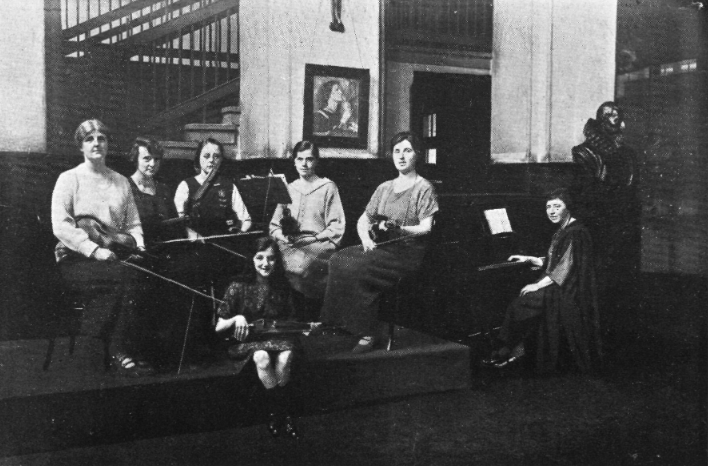
Image courtesy of Hutchesons’ Grammar School.
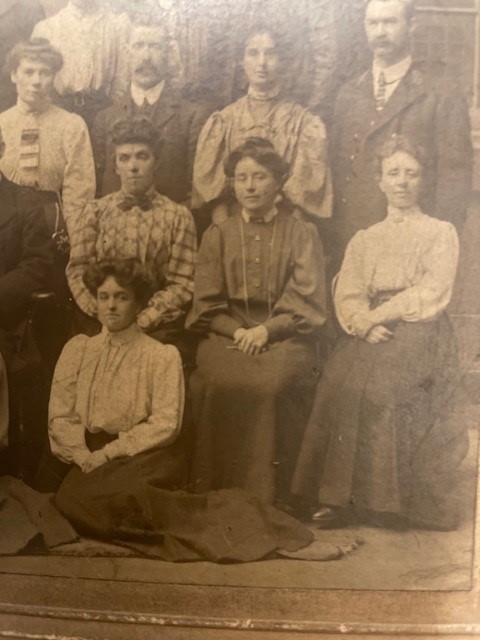
Image courtesy of Hutchesons’ Grammar School.
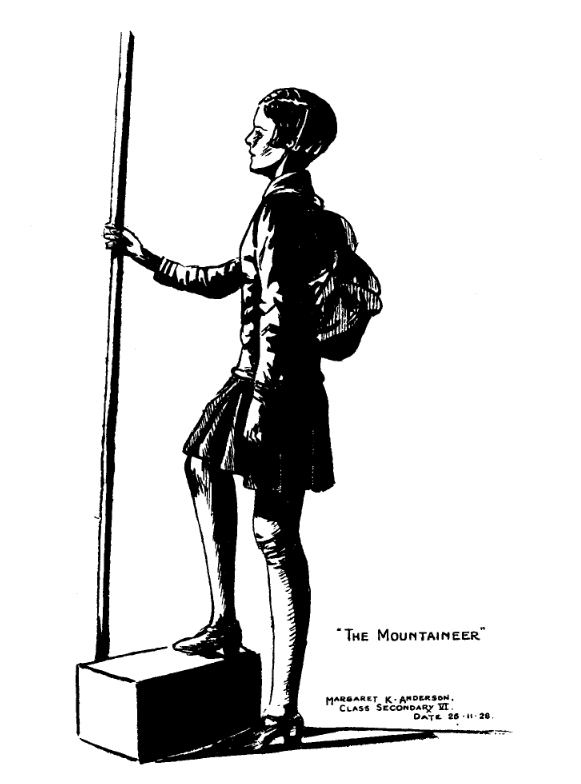
Image courtesy of Hutchesons’ Grammar School.
Ladies Scottish Climbing Club
In 1913, Margaret joined the Ladies Scottish Climbing Club (LSCC). The club was founded in 1908 and is the world’s oldest all-women’s mountaineering club still in existence. She served as its Secretary from 1921-1931, its President from 1932-1935 and became an honorary life member in 1960. She helped to establish a recognised presence for the club in the west of Scotland and organised many Saturday climbs. She was an early riser, planned carefully her walking routes and had a love for snow climbs. She also had a passion for glissading, where a seated climber slides down a steep snowy mountainside using an ice-axe and their heels as brakes.
Margaret scaled many of Scotland’s munros and spent time climbing in Europe. For example, In July and August 1922, she travelled to the Austrian Alps, where she ascended 20 peaks greater than 10,000 feet. These mountains included Wildspitze, Austria’s second-highest peak at 3,768 m, Großvenediger, Austria’s fourth-highest peak at 3,662 m and Similaun, Austria’s sixth-highest peak at 3,606 m. The following year, she spent July and August in Switzerland, where she scaled famous mountains such as the Matterhorn at 4,478 m and the Jungfrau at 4,158 m. In 1927, she spent the same summer months climbing Norwegian peaks such as Galdhøpiggen, the nation’s highest mountain at 2,469 m and Glitterind, the nation’s second-highest mountain at 2,464 m.
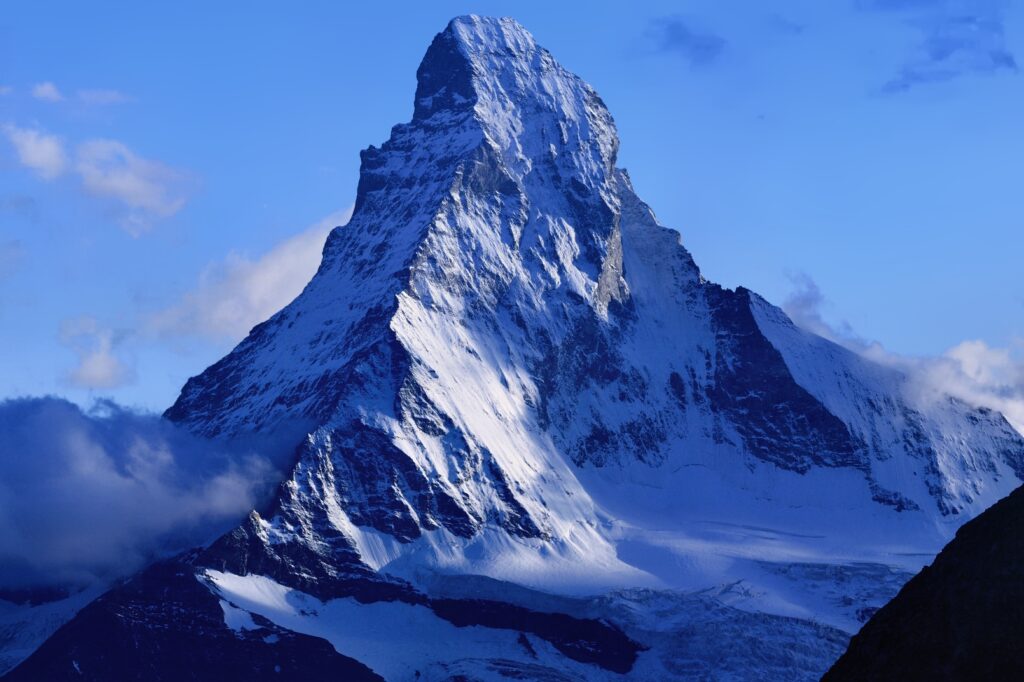
Image credit: chil on Camtocamp.org, CC BY-SA 3.0 via Wikimedia Commons
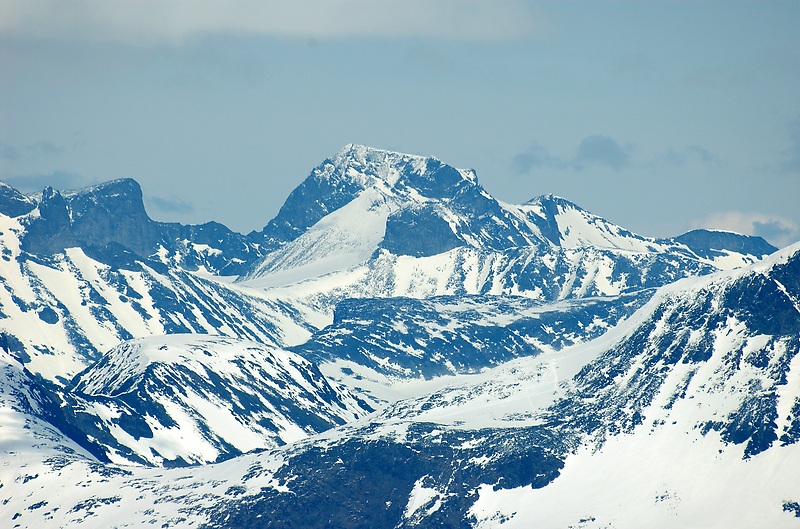
Image credit: Håvard Berland, CC BY-SA 3.0 via Wikimedia Commons
Later Life
Margaret continued to be actively involved in the LSCC after her retirement from Hutchesons’, maintaining her impressive enthusiasm for mountaineering. She moved to Edinburgh, where, during the Second World War, she drove her own car for the Women’s Voluntary Services (WVS). This organisation played a crucial role on the home front, helping civilians during and after air raids, providing first aid, and assisting with the evacuation of children, among other duties. She was one of only three regular drivers attached to the WVS’s Scottish Headquarters. After the Allied victory over the Axis powers, in 1957, Margaret moved to Crieff, where she lived until her death in 1968.
Margaret Murray was a pioneering and intrepid individual. Her academic ability was evidenced by her university achievements, while her mathematical skills enthused and educated innumerable pupils. She was also an accomplished mountaineer, scaling many famous peaks as a member of the LSCC, an organisation she would later lead. Her indomitable spirit carried on into wartime service, where, at least in a small way, she helped to defeat tyranny in Europe. Margaret was an exceptional individual, one who encapsulates the motto of the University of St Andrews: Ever to Excel.
Author
Cameron O’Donnell
Acknowledgement
Thank you to Isobel Falconer, my supervisor at the University of St Andrews, Julie Devenney, Archivist from Hutchesons’ Grammar School, Rachel Roberts, Archivist from Cheltenham Ladies’ College, Alison Higham, Archivist from the Ladies Scottish Climbing Club and Fran D’Alcorn, Chairperson of the Old Felicians’ Club. You were all extraordinarily helpful, and the information you provided shaped the structure and content of this article.

